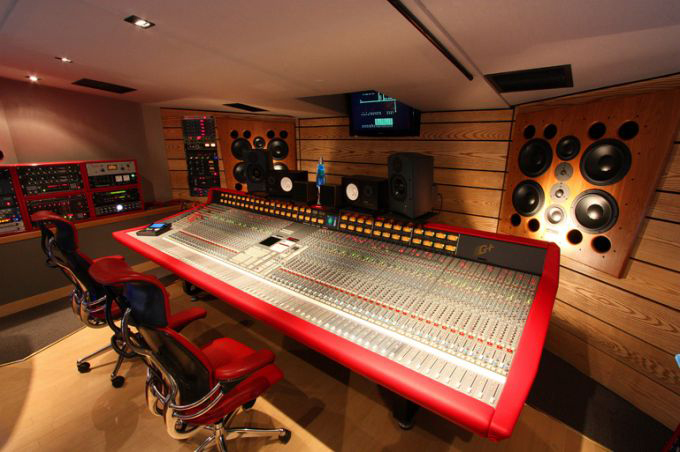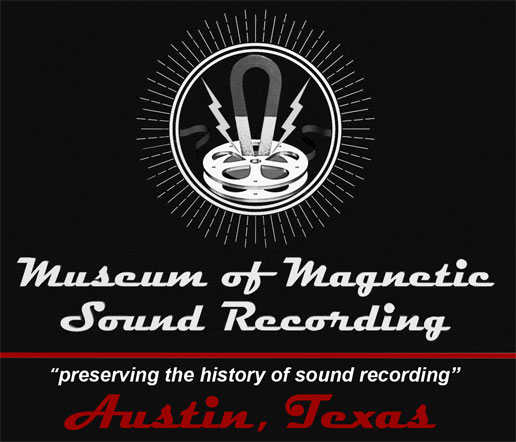
Solid State Logic
Founded in 1969, SSL has since expanded to its present 15 acre (61,000 m²) science park in Oxfordshire, England. The company invents, designs and manufactures technology for the manipulation of sound and the production and delivery of video.
SSL employs over 160 people worldwide and has regional offices in Los Angeles, Milan, New York, Paris and Tokyo, with additional support provided by an international network of distributors.
One of the first SSL consoles (in fact the first in the UK, and only the second console sold) was a 4000B installed at The Townhouse Studios on Goldhawk Road in London.  Possibly the earliest 4000E console was at RG Jones in London, closely followed by Eden Studios and Sarm Studios. Eden had a 48-channel console with integral patch and automation using 8" floppy drives. Sarm East had a 40-channel console with remote patchbay and automation with 8" floppy drives. Both consoles had Total Recall enabling console settings (and hence mixes) to be recalled & remade with a high degree of accuracy
Possibly the earliest 4000E console was at RG Jones in London, closely followed by Eden Studios and Sarm Studios. Eden had a 48-channel console with integral patch and automation using 8" floppy drives. Sarm East had a 40-channel console with remote patchbay and automation with 8" floppy drives. Both consoles had Total Recall enabling console settings (and hence mixes) to be recalled & remade with a high degree of accuracy
SSL analogue and digital audio consoles are used in both pre- and post-production for film, audio, video and broadcast sound. Notably, in May 2001, Studio 3 at Abbey Road Studios was refurbished with a 96-channel SSL 9000 J series console, the largest SSL console in Europe.
SSL also produces rackmount audio hardware for use in recording studios.In its infancy, SSL was the first firm to manufacture solid-state control systems for pipe organs. The name 'Solid State Logic' was coined by founder, Colin Sanders, to explain the then modern technology of transistor and FET switching to organ builders. Sanders' real enthusiasm was for music recording and he built mixing consoles for his recording studio, Acorn Studios, in Stonesfield, Oxfordshire. The organ division was sold in 2002 and is now known as Solid State Organ Systems.
Sanders developed the SL4000 A Series console in 1975. Two were built. This was followed by the SL4000 B Series with the first SSL Studio Computer, which debuted in 1977; six were made. The concept was further refined as the hugely successful SL4000 E Series (right), on which the company's fortunes were built. Paul Bamborough, who developed the Studio Computer, added the Total Recall system and studios across the world started to standardise on the SL4000 E Series Master Studio System, which refined in-line mixing console architecture and effectively integrated the multi-track tape recorder.
Although it had been designed for music production, the power and flexibility of the '4K', attracted Broadcast and Post-production customers including the BBC and Danmarks Radio. The introduction of stereo sound for TV led to the development of the SL6000 V Series Stereo Video System, with its three stereo stem mix matrix, and later to the SL8000 G Series. Meanwhile the 4000 E was upgraded to the 4000 G with a number of sonic enhancements and the Ultimation moving fader option.
To address a wider range of Broadcast and Post-production applications, in the mid-1980s SSL developed the SL5000 M Series Broadcast Production System and the SL5000 F Series Film Production System. These highly modular consoles though highly flexible pushed the limits of analogue audio technology in terms of size and power consumption and proved somewhat temperamental.
Although widely known for its analogue technology, SSL was one of the digital audio pioneers and put together an impressive team of digital engineers under the leadership of Peter Eastty. The team defected en masse to become Oxford Digital (subsequently Sony Oxford) and SSL had to start over. Recognising the importance of digital interface standardisation to the future of the industry, SSL partnered with Sony and Studer to develop the now widespread MADI (Multichannel Audio Digital Interface) protocol. The new team, led by Phil Hill, developed an eight channel editor, ScreenSound, followed by workstations, Scenaria and OmniMix; all targeted at the post-production market. This technology formed the basis of SSL 'A Series' consoles starting with Axiom and followed by Aysis, Avant, Aysis Air and Axiom MT. These consoles offered knob per function type control surfaces that were familiar to a generation of engineers who had grown up with SSL's analogue consoles.
SSL's analogue technology was updated through the introduction of the 9000 J Series in 1994. This was based around the new SuperAnalogue technology that provides very high bandwidth performance. The 9000 K, which followed in 2002, added full 5.1 Surround Sound processing.
A new generation of digital consoles was developed in the early years of the 21st Century starting with the C100 and C200 Broadcast consoles. C100 was designed for On-Air applications and based around an assignable 'channel tile' control surface. C200 was configured for production applications and features a knob-per-function channel strip approach based on earlier consoles and so familiar to thousands of SSL experienced mixing engineers.
In 2005, SSL was acquired by Peter Gabriel and US Broadcast technology entrepreneur Dave Engelke. Later that year, based on the same Centuri processing platform as the C100 and C200, the C300 Post-production console was launched. Featuring multiple DAW control, supporting up to three separate mixers and including a very comprehensive mix automation system, the C300 is one of the most powerful and flexible mixing consoles in the world. SSL developed a new division of its business focused on Workstation Partner Products that include a range of products, both analogue and digital. In 2006 it acquired Sydec Audio Engineering and productised its developments including the range of Alpha-Link I/O products and its Delta-Link Protools HD / MADI interface.
The Blackrock processing platform now supports the C100 and the recently (2009) introduced C10 console, featuring dialogue automix — a console feature that automates the mixing of multi-mic round table setups. Blackrock technology enables the full mirroring of audio processing engines bringing new levels of security to Broadcast operations.
Wikipedia
More from SSl See also Multi-Track recording



